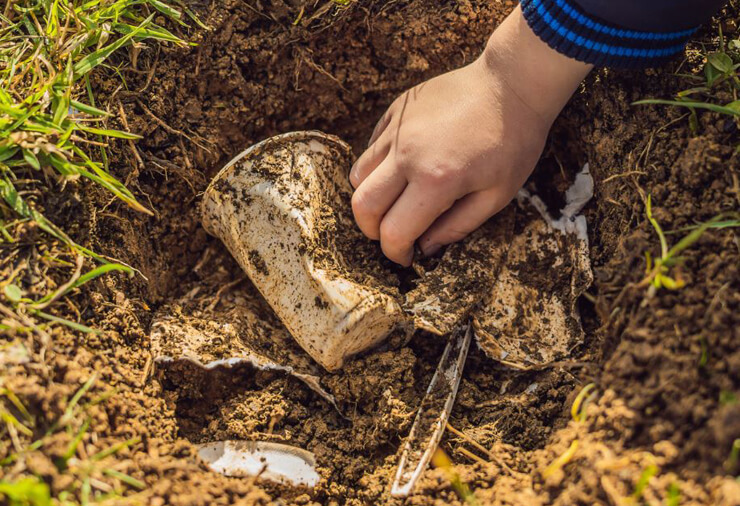This month’s blog post comes to us from Double A Paper, the best choice for our environment. Their commitment to the environment is impressive and humbling, and their mission is to create “a better paper for a better world”.

You’ve heard about biodegradable materials since grade school. But times have changed, and with all of the new synthetic materials available, it’s hard to know what’s biodegradable and what doesn’t fit the bill.
The true definition of biodegradable, according to Webster’s Dictionary, is “capable of being broken down, especially into innocuous products, by the action of living things (such as microorganisms).”
Are Plastics Biodegradable?
Believe it or not, some are. Those made with renewable raw materials, microorganisms, petrochemicals, or mixes of all three will break down. For example, polylactic acid (PLA) plastics are made from fermented plant starch and can be composted. In the right scenario, they will dissolve into the earth without a trace within three months; but could take as long as 100 – 1,000 years, depending on how much circulation they receive while composting or sitting in a landfill.
How About Styrofoam?
Amazingly, this material is still as non-biodegradable as it was when it was first produced. It can break down between a few years and a million years, but is more likely to be on the longer end of that estimate. Made with petroleum, this product has been banned by places like Orange County, California and Portland, Oregon.
If you’re looking for a biodegradable alternative, there are many options.
What Materials Are Definitively, Without a Doubt Biodegradable?
o Paper, including waxed paper
o Fruits and Vegetables
o Flowers
o Wood
o Some Plastics that Include Corn Oil, Orange Peel, Starch, and Plants
However, these materials must have the right conditions, such as a compost bin that will help break down the materials with heat, water, and microorganisms. Composting works by accelerating the natural decay process through offering microorganisms an optimal environment: nutrients, warm temperatures, oxygen, and moisture. They consume the composted materials and their waste products are nutrient rich soil, which can then be used for your garden or other growing area.
Many biodegradable materials make great composting. For example, any foods that are not meat, like vegetable peelings and ends, coffee grinds, egg shells, and even non-food items like paper towels and napkins. But don’t include any meat, animal waste, animal bones, or anything that would foster harmful bacteria and microorganisms.
What’s Not Biodegradable?
o Most Plastics
o Styrofoam
o Metals
o Chemicals
o Paint
o Rubber
o Glass
Some Biodegradable Alternatives to Try
o Instead of plastic, try biodegradable plastics
o Instead of Styrofoam, see if you can bring your own biodegradable container to a restaurant
o Instead of plastic bags, use your own reusable cloth tote or satchel
o Instead of foil, use wax paper
o Instead of plastic straws, use paper ones
Double A Paper is 100% biodegradable. We’re proud to offer a product that won’t harm the Earth, but we’re even more focused on the process of producing it, from seed to sapling to the letter you place on someone’s desk. One of our most important guiding tenets is sustainability.
Order your Double A Paper from www.jacobsgardner.com and feel the difference.

